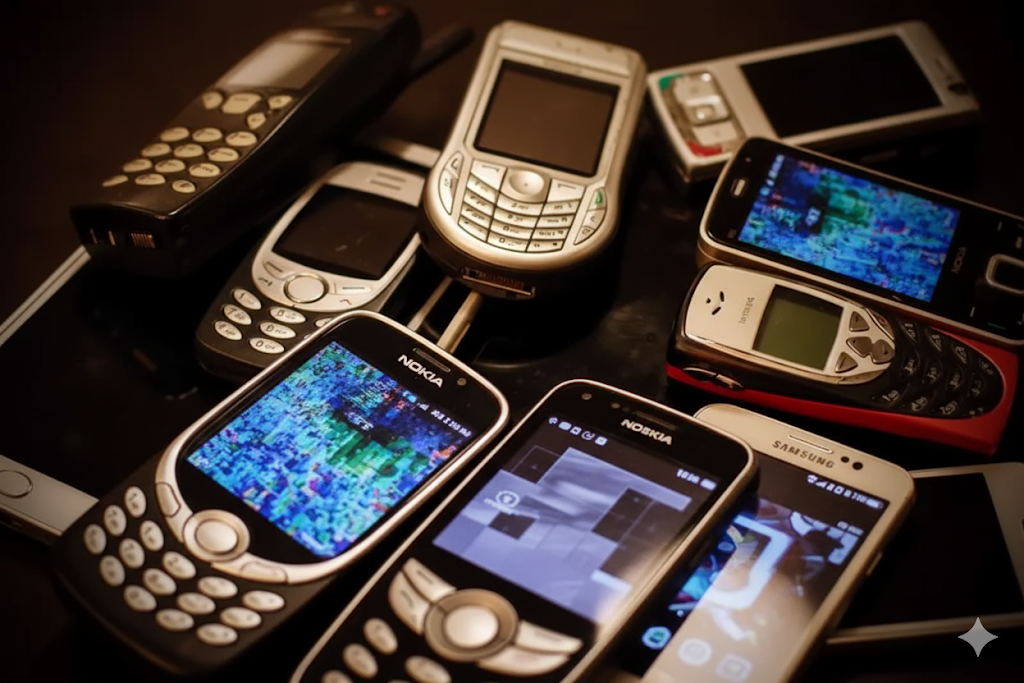🌱 China stands at the forefront of a revolutionary transformation in mobile phone sustainability, with the potential to create the world’s largest circular economy ecosystem for smartphones
Table of Contents
As the world’s largest mobile phone consumer market, China is expected to have six billion used mobile phones by 2025. This presents both an unprecedented challenge and an extraordinary opportunity to revolutionize how we think about smartphone lifecycle management. The transition from a linear “take-make-dispose” model to a circular economy approach could fundamentally reshape China’s technology sector and establish global leadership in sustainable innovation.
How China Can Build a Circular Economy for Mobile Phones: The Complete Strategic Guide
🔄 Understanding China’s Mobile Phone Circular Economy Challenge
The scale of China’s mobile phone market is staggering. China produces and exports millions of mobile phones but only a small fraction of used phones are recycled. This linear approach to mobile phone consumption has created mounting environmental pressures and represents a massive waste of valuable resources.
📱 Current State of China’s Mobile Phone Market
China’s mobile phone ecosystem encompasses several key dimensions that make circular economy implementation both challenging and essential:
- Manufacturing Dominance: China produces over 70% of global smartphones
- Consumer Base: Over 1.6 billion active mobile phone users
- Upgrade Cycles: Average replacement every 2-3 years
- E-waste Volume: Projected 6 billion unused phones by 2025
- Resource Recovery: Currently recovers only materials, where no component, assembly or packaging energy is recovered at the end of product life
💡 Core Principles of Mobile Phone Circular Economy in China
Building a successful circular economy for mobile phones requires understanding and implementing several fundamental principles that can transform the entire value chain.
🔧 Design for Circularity
The foundation of any circular economy begins with product design. Chinese manufacturers must adopt circular design principles that prioritize:
- Modularity: Creating phones with easily replaceable components
- Durability: Extending device lifespan through robust construction
- Repairability: Ensuring components can be easily serviced and replaced
- Material Selection: Using recycled and recyclable materials
- Standardization: Adopting common components across device families
♻️ Extended Producer Responsibility (EPR)
Implementing comprehensive EPR frameworks where manufacturers take responsibility for the entire lifecycle of their products, including:
- Take-back Programs: Mandatory collection of used devices
- Recycling Targets: Specific percentages of materials to be recovered
- Financial Incentives: Economic rewards for sustainable practices
- Performance Monitoring: Regular assessment of circular economy metrics
🏗️ Building China’s Mobile Phone Circular Economy Infrastructure
Creating a robust circular economy requires developing comprehensive infrastructure that supports every stage of the mobile phone lifecycle.
🔄 Collection and Reverse Logistics Networks
Establishing efficient systems to collect used mobile phones from consumers across China’s vast geography:
📍 Collection Points Strategy:
- Retail Integration: Utilizing existing mobile phone stores as collection hubs
- E-commerce Platforms: Leveraging online marketplaces for device trade-ins
- Community Centers: Establishing local collection points in residential areas
- Corporate Programs: Partnering with enterprises for bulk device collection
- Mobile Collection: Door-to-door pickup services in urban areas
🏭 Advanced Recycling and Refurbishment Facilities
Developing state-of-the-art processing facilities that can handle the complexity of modern smartphones:
- Automated Disassembly: Robotic systems for efficient component separation
- Precious Metal Recovery: Efficient extraction of rare metals such as palladium and tantalum from waste electronic appliances
- Component Refurbishment: Restoring components to like-new condition
- Quality Testing: Rigorous testing protocols for refurbished devices
- Data Security: Secure data wiping and destruction services
💼 Economic Models for China’s Mobile Phone Circular Economy
Successful circular economy implementation requires innovative business models that create value while promoting sustainability.
💰 Product-as-a-Service (PaaS) Models
Transforming mobile phone ownership into service-based relationships:
- Device Leasing: Consumers lease phones instead of purchasing
- Performance Guarantees: Service providers ensure optimal device performance
- Upgrade Flexibility: Easy transitions to newer devices when needed
- Maintenance Inclusion: Comprehensive repair and maintenance services
- End-of-Life Management: Automatic device return and recycling
🔄 Refurbishment and Resale Markets
Creating robust secondary markets for refurbished mobile phones:
📊 Market Segmentation Strategies:
- Premium Refurbished: High-end devices with warranty guarantees
- Budget-Friendly Options: Affordable phones for price-sensitive consumers
- Enterprise Solutions: Bulk refurbished devices for corporate clients
- Export Markets: Refurbished phones for developing markets
- Component Sales: Individual parts for repair services
🔬 Technology Innovation for Circular Mobile Phones
Advanced technologies are crucial for enabling efficient circular economy processes in China’s mobile phone sector.
🤖 AI and Machine Learning Applications
Leveraging artificial intelligence to optimize circular economy operations:
- Predictive Maintenance: AI-powered diagnostics to extend device lifespans
- Quality Assessment: Automated evaluation of used device conditions
- Demand Forecasting: Predicting refurbished phone market demand
- Supply Chain Optimization: Efficient routing of devices through circular processes
- Material Identification: Automated sorting of recyclable materials
🔍 Blockchain for Transparency and Traceability
Implementing blockchain technology to create transparent circular economy ecosystems:
- Device Provenance: Tracking complete device history and ownership
- Material Tracking: Monitoring recycled materials through supply chains
- Quality Verification: Immutable records of refurbishment processes
- Carbon Footprint: Tracking carbon intensive stages in smartphone lifecycle, where production and manufacturing account for around 80% of total footprint
- Compliance Monitoring: Automated verification of regulatory requirements
📊 Consumer Behavior and Market Dynamics
Understanding and influencing consumer behavior is critical for circular economy success in China’s mobile phone market.
🎯 Consumer Willingness to Pay for Sustainability
Research shows promising trends in consumer attitudes toward sustainable mobile phones. In China, 44% of consumers were willing to pay premiums exceeding 10% for environmentally friendly devices. This presents significant opportunities for circular economy business models.
💚 Strategies to Increase Consumer Adoption:
- Education Campaigns: Raising awareness about environmental benefits
- Quality Guarantees: Providing warranties comparable to new devices
- Trade-in Incentives: Offering attractive exchange programs
- Social Status: Positioning sustainable choices as premium options
- Convenience: Making circular options as convenient as traditional purchasing
📱 Changing Device Usage Patterns
Consumers keep their devices significantly longer than in previous years, creating opportunities for circular economy models that support extended device lifespans.
🏛️ Policy Framework and Government Support
Government policies and regulations play a crucial role in enabling circular economy development in China’s mobile phone sector.
📋 Regulatory Requirements and Standards
The Chinese government has placed high expectations on the electronic recycling industry, setting ambitious targets for sustainable development.
🎯 Key Policy Areas:
- Recycling Targets: Mandatory percentages of electronic waste recycling
- Extended Producer Responsibility: Legal frameworks for manufacturer accountability
- Right to Repair: Regulations ensuring device repairability
- Material Disclosure: Requirements for transparency in material composition
- E-waste Management: Comprehensive electronic waste handling protocols
💰 Financial Incentives and Support Mechanisms
Creating economic incentives that promote circular economy adoption:
- Tax Benefits: Reduced taxation for circular economy businesses
- Subsidies: Financial support for recycling infrastructure development
- Green Bonds: Funding mechanisms for sustainable technology projects
- Research Grants: Support for circular economy innovation
- Public Procurement: Government preference for circular economy products
🌐 Global Partnerships and Knowledge Exchange
Building China’s mobile phone circular economy benefits from international collaboration and knowledge sharing.
🤝 International Cooperation Models
Establishing partnerships that accelerate circular economy development:
- Technology Transfer: Accessing global best practices and innovations
- Standard Harmonization: Aligning with international circular economy standards
- Joint Ventures: Collaborating on circular economy infrastructure projects
- Research Partnerships: Academic and industrial research collaborations
- Supply Chain Integration: Connecting with global circular supply networks
📈 Measuring Success: Key Performance Indicators
Effective measurement systems are essential for tracking progress and optimizing circular economy performance.
📊 Circular Economy Metrics for Mobile Phones
Comprehensive KPIs that capture the full impact of circular economy initiatives:
♻️ Material Flow Indicators:
- Collection Rate: Percentage of end-of-life devices collected
- Recycling Efficiency: Proportion of materials successfully recovered
- Refurbishment Rate: Percentage of devices returned to use
- Material Loop Closure: Recycled content in new device production
- Waste Reduction: Decrease in landfilled electronic waste
💰 Economic Impact Metrics:
- Job Creation: Employment generated by circular economy activities
- Cost Savings: Reduced material costs through recycling
- Market Value: Economic value of refurbished device markets
- Investment Attraction: Capital flows into circular economy projects
- Export Revenue: International sales of circular economy technologies
🔮 Future Outlook: China’s Mobile Phone Circular Economy by 2030
The next decade presents unprecedented opportunities for China to establish global leadership in mobile phone circular economy implementation.
🚀 Emerging Opportunities
Several trends will shape the future development of China’s mobile phone circular economy:
- 5G and 6G Integration: Leveraging advanced connectivity for circular economy optimization
- IoT-Enabled Tracking: Real-time monitoring of device lifecycle stages
- Advanced Materials: Development of fully recyclable smartphone components
- Digital Twins: Virtual models for optimizing circular processes
- Quantum Computing: Enhanced processing power for complex circular economy algorithms
🎯 Strategic Goals for 2030
China’s mobile phone circular economy should aim to achieve ambitious but realistic targets:
- 80% Collection Rate: Capturing the vast majority of end-of-life devices
- 50% Refurbishment Rate: Returning half of collected devices to active use
- 95% Material Recovery: Recycling nearly all materials from non-repairable devices
- 30% Circular Content: Using recycled materials in new device production
- Carbon Neutral Operations: Achieving net-zero emissions in circular processes
🛠️ Implementation Roadmap for China’s Mobile Phone Circular Economy
Successfully building a circular economy requires a phased approach with clear milestones and deliverables.
📅 Phase 1: Foundation Building (2025-2026)
- Policy Framework: Establish comprehensive regulatory foundation
- Pilot Programs: Launch regional circular economy demonstrations
- Infrastructure Development: Begin construction of collection and processing facilities
- Stakeholder Engagement: Build coalition of industry, government, and civil society partners
- Technology Testing: Validate key technologies for circular economy applications
📅 Phase 2: Scale-Up and Optimization (2026-2028)
- National Rollout: Expand successful pilots to national scale
- Supply Chain Integration: Connect circular processes with manufacturing
- Market Development: Establish robust refurbished device markets
- International Partnerships: Engage with global circular economy networks
- Innovation Acceleration: Invest in advanced circular economy technologies
📅 Phase 3: Leadership and Export (2028-2030)
- Global Standards: Lead development of international circular economy standards
- Technology Export: Export Chinese circular economy solutions globally
- Market Leadership: Achieve dominant position in circular mobile phone markets
- Continuous Innovation: Maintain technological edge through ongoing R&D
- Sustainability Leadership: Demonstrate global leadership in sustainable technology
💼 Business Case for Chinese Companies
The transition to circular economy models presents compelling business opportunities for Chinese mobile phone companies.
💰 Financial Benefits
- Cost Reduction: Lower material costs through recycling and reuse
- New Revenue Streams: Additional income from refurbishment and services
- Risk Mitigation: Reduced exposure to raw material price volatility
- Market Differentiation: Competitive advantage through sustainability leadership
- Regulatory Compliance: Meeting evolving environmental requirements
🌟 Strategic Advantages
- Brand Enhancement: Improved corporate reputation and customer loyalty
- Innovation Driver: Catalyst for technological advancement and R&D
- Market Access: Entry into growing sustainable technology markets
- Talent Attraction: Appeal to environmentally conscious employees
- Investment Appeal: Attraction of ESG-focused investors
🎯 Overcoming Implementation Challenges
While the opportunities are significant, building China’s mobile phone circular economy faces several challenges that must be addressed strategically.
⚠️ Key Challenges and Solutions
🔄 Consumer Behavior Change:
- Challenge: Overcoming preferences for new devices
- Solution: Education campaigns and quality guarantees for refurbished products
💰 Economic Viability:
- Challenge: Making circular economy models financially competitive
- Solution: Government incentives and economies of scale development
🏭 Infrastructure Requirements:
- Challenge: Building comprehensive collection and processing networks
- Solution: Phased development and public-private partnerships
⚙️ Technology Integration:
- Challenge: Integrating advanced technologies into existing systems
- Solution: Gradual implementation and pilot testing programs
🌟 Success Stories and Best Practices
Learning from existing successes provides valuable insights for scaling China’s mobile phone circular economy.
🏆 Global Best Practice Examples
- European Union: New rules to make phones and tablets more durable, energy efficient and easier to repair
- Tech Giants: World’s biggest tech companies seeking ‘circular economy’ solutions from phones to dishwashers
- Corporate Programs: Successful take-back and refurbishment initiatives by major manufacturers
- Innovation Hubs: Research centers developing circular economy technologies
- Policy Frameworks: Effective regulatory approaches in leading countries
🎊 Conclusion: China’s Path to Mobile Phone Circular Economy Leadership
China’s journey toward building a comprehensive circular economy for mobile phones represents one of the most significant sustainability transformations of the 21st century. With six billion used mobile phones expected by 2025, the scale of both challenge and opportunity is unprecedented.
Success will require coordinated action across multiple dimensions: innovative business models, advanced technologies, supportive policies, and changing consumer behaviors. The economic potential is enormous, with opportunities to create new industries, generate employment, and establish China as the global leader in sustainable technology.
The circular economy for mobile phones is not just an environmental imperative—it’s an economic opportunity that can drive China’s next phase of sustainable development and technological leadership.
By implementing the strategies outlined in this guide, China can transform its mobile phone sector from a linear model of resource consumption to a circular model of sustainable prosperity, setting an example for the world and securing competitive advantages for the future.
🏷️ Keywords and Tags:
Primary Keywords:
China circular economy mobile phones, smartphone recycling China, circular economy strategies China, sustainable mobile phone industry China, mobile phone waste management China, green technology China circular economy
Secondary Keywords:
China mobile phone sustainability, circular economy implementation China, smartphone refurbishment China, e-waste recycling China, sustainable technology China, mobile phone lifecycle management, China green innovation
Long-tail Keywords:
How to build circular economy for mobile phones in China, China mobile phone recycling infrastructure development, sustainable smartphone business models China, circular economy policy framework China mobile phones
📱 Hashtags:
English:
#ChinaCircularEconomy #SustainableTechnology #MobilePhoneRecycling #GreenInnovation #CircularEconomy #SmartphoneSustainability #EWasteManagement #SustainableChina #CircularBusiness #GreenTech










